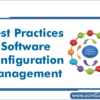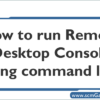
How to run Remote Desktop Console by using command line?
How to run Remote Desktop Console using command line If you may want to run Desktop Console from a batch file, for example RDC over VPN, you can use mstsc…
Read more »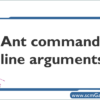
Ant command line arguments – Examples – Summary
Ant command line arguments Several tasks take arguments that will be passed to another process on the command line. To make it easier to specify arguments that contain space characters,…
Read more »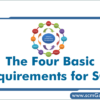
The Four Basic Requirements for SCM Process – SCM Guide
Identification, control, audit, and status accounting are the four basic requirements for a software configuration management system. These requirements must be satisfied regardless of the amount of automation within the SCM process. All four may be satisfied by an SCM tool, a tool set, or a combination of automated and manual procedures.
- Identification—Each software part is labeled so that it can be identified. Furthermore, there will be different versions of the software parts as they evolve over time, so a version or revision number will be associated with the part. The key is to be able to identify any and all artifacts that compose a released configuration item. Think of this as a bill of materials for all the components in your automobile. When the manufacturer realizes that there has been a problem with parking brakes purchased from a subcontractor, it needs to know all the automobile models using that version of the parking brake. It is the same with software. If we are building a multimedia system that has audio MPEG3 drivers for Windows 98, Windows 2000, Windows CE, Linux, and FreeBSD operating systems, how do we find out which releases are impacted when we find an error in the Linux product? You must go back to your SCM system to identify all the common components in all operating system releases that are impacted.
Read more »
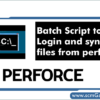
Batch Script to Login and sync the files from perforce | Step by step guide
Batch Script to Login Perforce server using command line Step 1: Create a new text file Step2: Copy following command %path% @echo on p4 -p172.28.16.2:1666 -uUserName -P”Password” -c”Client_Name” client –o…
Read more »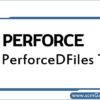
Step by step guide on PerforceDFiles Tool | Perforce Tutorial
PerforceDFiles Use: This tool can be used to add thousands of files and directory in perforce server on single click which is having different-different hierarchy Prerequisite: Java should install and…
Read more »
Share common projects with two different projects in CVS
Share common projects with two different projects in CVS If there are two or more projects in the repository, some of the files are common in these two projects and some…
Read more »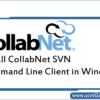
Process to Install CollabNet SVN Command Line Client in Windows
Link: http://www.collab.net/downloads/subversion/ 1. Platform and configuration Product: CollabNet Subversion server Certified platforms: Windows XP SP2, Win 2003(Standard Edition) R2 Apache version: 2.2.8 ViewVC: 1.0.5 (requires ActiveState…
Read more »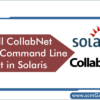
How to Install CollabNet SVN Command Line Client in Solaris?
Link: http://www.collab.net/downloads/subversion/solaris.html 1. Platform and configuration Product: CollabNet Subversion client Platforms: Solaris 10 SPARC Prerequisite: You must be a superuser (root) to install and uninstall CollabNet Subversion. 2. Import/Update CollabNet…
Read more »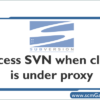
How to Access SVN when client is under proxy ?
The Subversion client can go through a proxy, if you configure it to do so. First, edit your “servers” configuration file to indicate which proxy to use. The files…
Read more »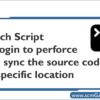
Batch Script to login to perforce and sync the source code to specific location
Batch Script to login to perforce and sync the source code to specific location @echo offcd /d “E:\Development\AnthillPro\work\perforce\SEABU\Module\Features1” “p4” -c SYSTEMBUILDSTAR -p 10.0.0.3:1666 -u UserName -P UserPass sync //SEABU/Module/Features1/… //SYSTEMBUILDSTAR/Module/Features1/…
Read more »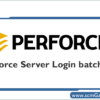
How to Login Perforce Server by Using Batch File ?
Login perforce server using local client through batch script @echo off p4 -p10.0.0.3:1666 –uUser_Name -P”User_Pass” -c”PERFORCE_CLIENT” client –o Inputs: -p à Server Address -u à User Name -P à…
Read more »
